Earthen Clay Plaster and Aliz
What is old is now new! The 5 thousand year old process of finishing the inside walls of your home by smearing clay on the walls is enjoying a new renaissance. The idea is simple the natural materials used: mud, sand, straw, are free of the more than thousands of chemicals that can be used in conventional paints; many of which are newly created chemical components with little research conducted regarding their long-term effects on both humans and the environment.[1]
You use your own clay, sand, and straw to begin the process of finishing your walls. Wall surfaces should not be previously painted, straw bales, adobes, even sheetrock is okay (paint the drywall first with a mix of 10 parts hydrated or homemade wheat paste, 1 part fine sand and 1 part clay. Let it dry and don't wet it down before you plaster it. The mix varies with the look you want, change the smoothness or texture and color. Start with a rougher mix and then use a smoother mix for the finish coat.
The Rough Mix: [2] Earth plaster (still wet) clay is Hawthorne Bond 35
1.5 parts water
2.5 parts sifted clay soil (or a mix of your soil and our clay like Hawthorne 35)
1.25 parts sand
2 to 3 parts (3/4 inch) chopped straw
Apply the rough mix with a trowel, not too thick, smooth it out with the trowel, allow to get leather hard. Then polish it with the edge of the trowel for a finished look. If you intend to finish with a smoother coat, go back with a large wet sponge and expose the grain of the sand.
The rough mix is what the Landers use as a final mix when they are doing a high straw content wall with the exposed straw look. The really rough mix would have much longer length straw, up to full length. Also the 2.5 parts sifted clay soil proportion was worked out by the Steen's for the Lander's particular soil in Kingston which they believe is about a 30 percent clay content so people at home need to experiment with their soils or if buying bagged materials work out their own recipe
Color chart of unfired clay colors

The Finish Coat or Aliz:
The final coat or finish coat is a much finer mixture of kaolin such as 6-tile or EPK, Redart or ball clay or even your own local clays. The choice of the clay you use will determine the color and texture of the wall. This earthen clay plaster has a little iron oxide for a gentle pink color. This coat can be considered a clay paint or Aliz.

The Final mix
- 1 part Kaolin (or other clays)
- 1 part fine (90 mesh) white sand or Mica or a mix of both.
- 2 parts water
Mix to the consistency of paint (you will apply this with a brush)
It is a good idea to use wheat paste (flour boiled in water) to act as a glue, you could use Elmer s glue, egg whites, CMC gum, or Additive A. Imbed found objects, finely ground straw or large mica for more visual interest. Most walls require two coats, the last being finer and smoother.
Color Chart of non-toxic iron based pigments
Color Chart using Only Non-Toxic Iron Based Permanent Pigments.
For this color chart the base Earthen Clay Plaster was: By Weight Click Here for Prices
50% Kaolin 6 Tile , 25% 90 Mesh Pure Silica Sand and 25% 60 mesh Mica
 |
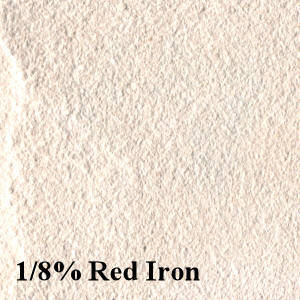 |
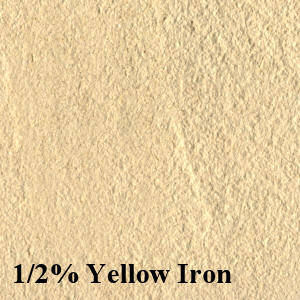 |
 |
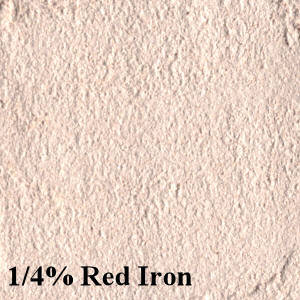 |
 |
 |
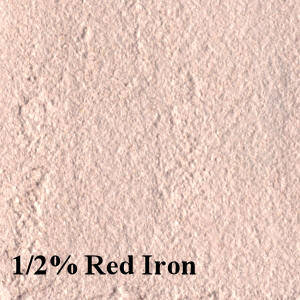 |
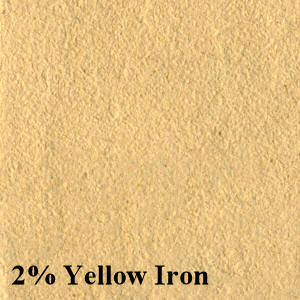 |
 |
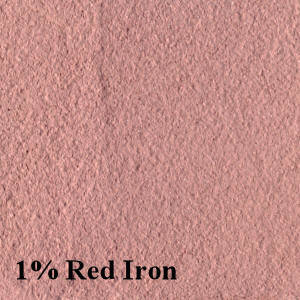 |
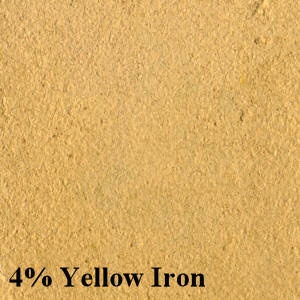 |
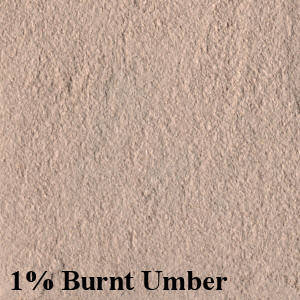 |
 |
 |
Hands on Classes.
Earth Plaster and Earthen Floor Workshop
More reading:
Earth Plasters and Aliz CAROLE CREWS
For Love Of Mud by Keely Meagen
Plasters & Strawbale Cedar Rose
Footnotes
[1] Bioshield Paint
[2] http://www.LanderLand.com
Wheat Paste (or Wallpaper Glue)
Prepare 1 cup (2.4 dl) of very hot water. Make a thin mixture of 3 tablespoons (45 ml) of white flour and cold water (just enough to wet all the flour and make it liquid enough to pour). Pour the cold mixture slowly into the hot water while stirring constantly. Bring to a boil. When it thickens, allow to cool. Smear on like any other glue.



